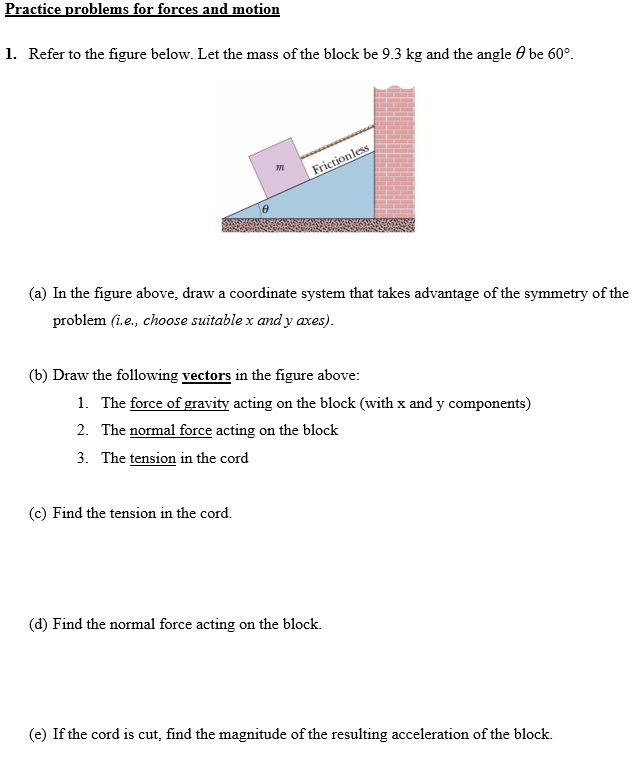Practice problems for forces and motion Refer to the figure below. Let the mass of the block be 9.3 kg and the angle θ be 60∘. (a) In the figure above, draw a coordinate system that takes advantage of the symmetry of the problem (i. e., choose suitable x and y axes). (b) Draw the following vectors in the figure above: The force of gravity acting on the block (with x and y components)The normal force acting on the block The tension in the cord (c) Find the tension in the cord. (d) Find the normal force acting on the block. (e) If the cord is cut, find the magnitude of the resulting acceleration of the block.
